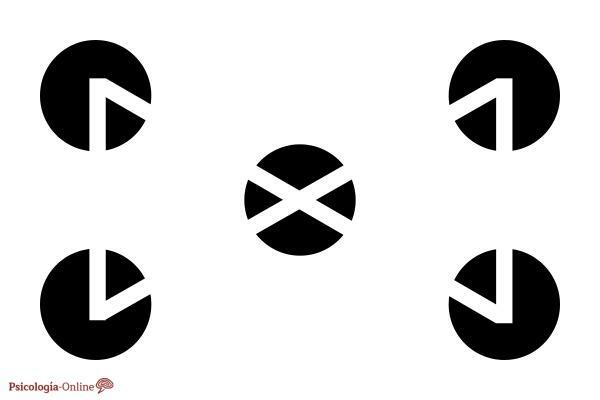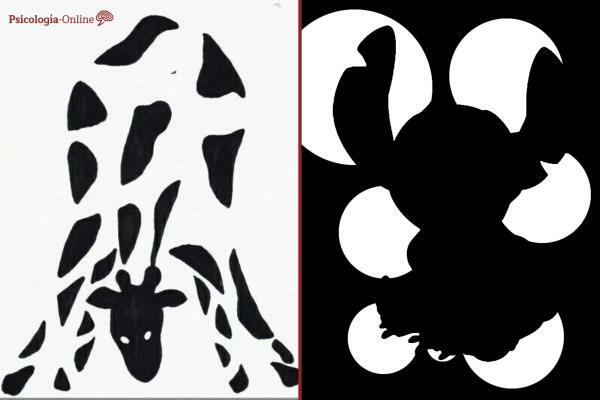
Perception is a characteristic of the human being. Do we not connect with other people based on the perception we have in social encounters? Let us think for a moment about certain random animals and cars: it is evident that the forms vary. This is not only applicable to the forms in a general way, we could also address the plane of the phrases since the human being can give meaning to what he says and hears from the interpretation that is made of the language.
Furthermore, it is also possible to understand a totality referring to any subject in question even if it is incomplete. And it is that people can account for some meaning if they complete the pieces of the puzzle. If you find what you are reading interesting, these lines can help you. In this Psychology-Online article, we will provide you with information about what is the Gestalt law of closure and examples.
Index
- What is the law of Gestalt closure
- How the Gestalt law of closure is used
- Examples of the Gestalt Law of Closure
What is the law of Gestalt closure.
When we refer to the closing law of the Gestalt, we refer to one of the particular laws that the Gestalt theory adopts. In a more simplified way, this law has the principle of the tendency of the mind to make sense of and/or close sentences and images from the perception of the stimulus that arises. For this reason, it is possible that people can understand what is presented to them even though the stimulus appears incomplete.

How the Gestalt law of closure is used.
Now that you know what the Law of Gestalt Closure is, I will explain to you how it is used: in principle, to be able to perceive the incomplete forms that people can understand in everyday life, it is necessary to start from the knowledge previous. In other words, the ability to recognize and close shapes It can be carried out if you have some previous experience in relation to the object, image and/or word that you want to close.
As a result of these aspects, we will place three steps that the mind carries out to exercise the Gestalt law of closure:
- Stimulus Recognition: consists of the association of the image, word, phrase and/or object with some memory that allows knowing what is presented to the person. Here come into play the previous experiences that arouse a relationship with the stimulus in question.
- shape perception: one of the principles of Gestalt theory lies in the fact of giving greater value to the totality of the stimulus than to the sum of its parts. When it comes to incomplete forms, the mind has the ability to perceive the stimulus even if something is missing.
- Closing: when the incomplete stimulus has been perceived, the mind tends to close the form due to the knowledge acquired during the course of life.
Examples of the Gestalt law of closure.
In order to provide greater clarity to the issue being addressed, it is essential to provide some examples in which the closure law of the Gestalt can be glimpsed because this principle has a great implication theoretical. For this reason, we will develop some examples linked to the field of advertising and everyday life:
Gestalt closure law in advertising
One of the main utilities of the Gestalt law of closure is to perform brand logos of various products. The purpose of the incomplete forms that appear in advertising logos lies in the fact that the person remembers the image observed at the rate that the mind makes a closure of what has seen.
As an example, one could think of the logos of some computer brands as well as world-renowned supermarket chains. Beyond this, factors such as color, symmetry, among others, come into play here.
Gestalt Closure Law in Everyday Life
Another example of the Gestalt closure law in everyday life is the casual conversations that take place in various social settings. In general, it usually happens that a person is telling the story of some event and leaves an incomplete sentence or a certain word.
When this occurs, the listener's mind tends to fill in what is missing as this is a more stabilizing aspect to itself.
We hope you have found this post about the Gestalt closure law interesting, if you want to continue investigating the subject, we recommend you read our article What is the Gestalt law of proximity?.
This article is merely informative, in Psychology-Online we do not have the power to make a diagnosis or recommend a treatment. We invite you to go to a psychologist to treat your particular case.
If you want to read more articles similar to What is the law of Gestalt closure and examples, we recommend that you enter our category of cognitive psychology.
Bibliography
- Lopez Ortiz, R.H. (2016). Analysis of the laws of the Gestalt and its application in didactic materials for children of initial education II. Pontifical Catholic University of Ecuador, Esmeraldas headquarters. Faculty of Administrative and Accounting Sciences, School of Graphic Design.
- Oviedo, G.L. (2004). The definition of the concept of perception in psychology based on the Gestalt theory. Journal of Social Studies, 18 (3), 89-96.


